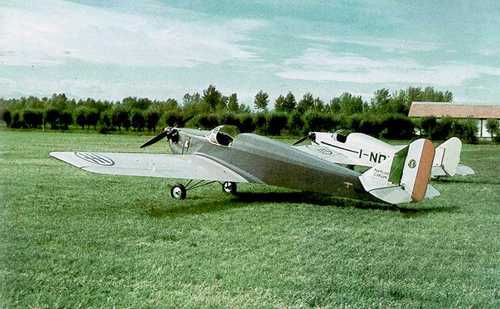
Italian Forces
A little and fun airplane
IMC Archives
Two light aircraft AVIA FL.3 at Vercelli airfield, early 1940. The aircraft in foreground is a military plane, the other IS a civilian plane, both of the open cockpit version. The L.3, later knew as FL.3, is a little (wing span 9.85 meter, length 6.36 meter), single-engine, two-seat side-by-side, a 65-HP four cylinder air-cooled CNA engine, designed by a team composed by Cesare Mosso, Ugo Graneri and Pieraldo Mortara on request of Francis Lombardi. The latter, a former WW1 ace with eight kills, was a sportsman of Thirties famous for his long raids with light tourist planes. Lombardi was a supporter of the light tourist airplanes useful also for the basic flight school and his ideas was achieved by the FL.3, first flight 6 November 1938, test pilot the same Francis Lombardi in the presence of Mussolini this day in visit at Vercelli, mass produced by AVIA (Azionaria Vercellese Industrie Aeronautiche) for the RUNA (the Royal Air National Union, ancestor of the today’s Aero Club d’Italia, at this time directly controlled by the Air Ministry) and for the Regia Aeronautica as primary trainer and liaison aircraft. AVIA, a company established at Vercelli by the same Francis Lombardi, produced from May 1940 to early 1942 a total of 335 FL.3, with open cockpit and enclosed cockpit, ten of them purchased by Croatian Air Force. This little and fun airplane was especially appreciated by the Luftwaffe which, after the Italian Armistice of 8 September 1943, seized almost 250 FL.3 employed by some Luftwaffe Fliegerschule in Germany as the A/B 14 at Klagenfurt and A/B 2 at Strassburg and in Hungary. On 30 June 1944 the FL.3 was as number, 124, the third Italian aircraft in the Luftwaffe inventory after the S.82 (231) and the CR.42 (133). Few FL.3 was employed also by the Repubblica Sociale Italiana’s Air Force. After the war Francis Lombardi, in the meantime became a well appreciated auto body designer, produced some FL.3, also exported in the Switzerland, for Italian flying clubs in addition to the planes survived to the conflict. Today few FL.3, largely re-engine mainly with the 90-HP Continental, are accurately maintained in flight conditions by their owners and some of them, as the I-OPES of the Rome’s Flying Club, restored with the pre-war or war livery. Victor Sierra
2248 Views
3/25/2013
